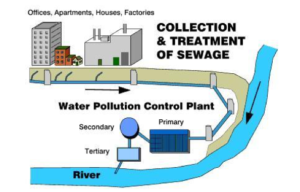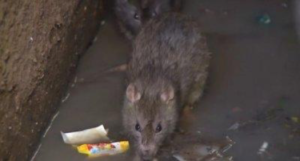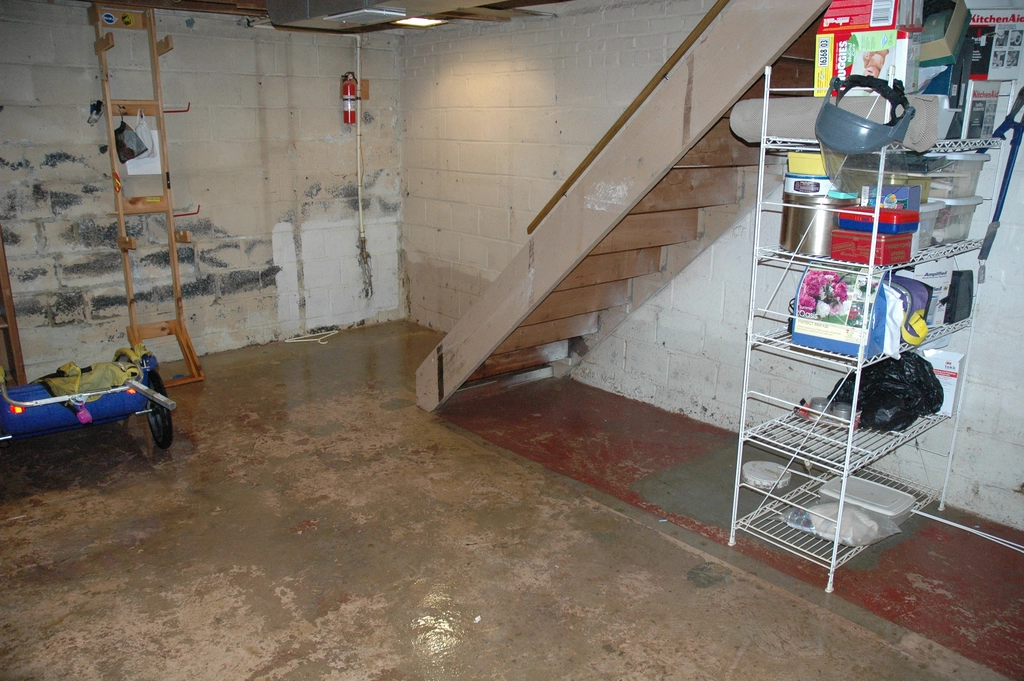What is sewage?

Sewage is all the wastewater carried away from your business/organisation in the sewerage system. Sewage is not just toilet waste, it is also water from washing, washing up, appliances and industrial liquid waste (‘trade waste’). For most businesses, there will be thousands of litres of sewage water flowing through the system every day.
Before being returned to the environment, the sewage must be made safe to prevent the transmission of disease and environmental pollution. When everything is working as it should, sewage enters a water-tight sewerage system where it is safely carried away to be treated appropriately.
What are the different types of sewage?
Blackwater is the water and human waste, detergents and toilet paper that is flushed down toilets. Blackwater contains a much higher proportion of organic pollutants including pathogenic microorganisms. It has a high concentration of ammonium, nitrate, phosphorus etc. Greywater is the term for the wastewater from sinks, showers, dishwashers etc. Like Blackwater, Greywater contains pathogens that are capable of transmitting disease to any humans and animals that come into contact with it.
What are the implications of a sewage leak?

All sewage has the potential to cause serious harm to human health. As well as the foul odour associated with sewage, its pathogenic content will transmit potentially fatal diseases if left untreated. Leaking sewage attracts rodents and other pests which will also carry disease. A sewage leak will also cause damage to property that may not be immediately obvious. All employers have a duty of care to individuals who encounter their organisation. Leaking sewage compromises the health and safety of humans, animals and the environment and the consequences are far-reaching. Sewage leaks will require a professional flood damage clean up.
How do sewage leaks happen?
Consider the age of your sewerage system, the answer could simply be deterioration through time. Materials decay, joints become loose, misaligned joints leak under the additional stress. External factors such as tree roots and construction work can also contribute to malfunction, collapse or leakage in the system. We have plenty of experience dealing with sewage leaks, like we did for a client in London.
11 Ways to detect a leak
- An unusually high water bill – Look back at previous usage and check for patterns and trends. The rise could be instant and dramatic or it may be a gradual increase over time.
- Constant sound of running water – Check the taps/faucets and toilets within the building then check for the sound of water behind walls, under floors or in ceilings.
- Low water pressure – A noticeable drop in water pressure as it is forced from taps or during toilet flushing is indicative of loss of pressure in the sewerage system due to cracked or burst pipes or loose joints.
- Reduced rate of flow – If water flows at a slower rate from taps/shower heads etc. there is probably a leak within the system.
- Unexplained damp areas – If damp areas occur without explanation it is important to act fast. Moisture quickly allows mould to infiltrate which spreads quickly and releases toxic spores into the environment.
- Lingering unpleasant odour – If your sewerage system is intact, you should never detect an unpleasant smell. The predominant gas is hydrogen sulphide, a smell similar to rotten eggs, it is potentially dangerous and will attract pests to the site which compounds the issues. Call in the experts at the earliest opportunity.
- Poor drainage – If drains are not clearing it is worth checking for blockages and cleaning with recommended techniques and solutions. If the problem persists, the cause is likely to be your sewerage system. An expert will be able to ascertain the most likely location of the rupture within your system.
- Rat sightings – Rats are attracted to the smell of raw sewage and will quickly become more prevalent. Rats are often the first signs of a compromised sewerage system. They can squeeze through holes as small as 2cm. Rats bring with them the threat of many potentially fatal diseases, from both direct and indirect contact.
- Pest infestation – Primarily in the UK, mosquitoes and insects belonging to the Psychodidae, Chironomide and Anisopidae families are the main culprits that are attracted to sewage. Moth flies, window gnats and others are a nuisance wherever they occur.
- Cracks around foundations – a leaking sewer is likely to cause ground movement that will negatively impact the structural safety of the building’s foundations.
- Landscape changes – Vegetation surrounding the sewage leak will appear lush and green as it receives additional nutrients. Other signs include pooled water, uneven paving/ground and sinkholes as earth is washed away.



